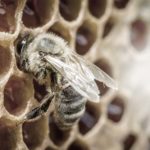Description
Multi-Antibiotic Honey (Quin/Thiam/Spec) RAPID Rapid Test Ordering Information
| Kit | Target Antibiotic | Reader Detection (PPB) | Visual Detection (PPB) | Sample Preparation | Assay Time |
| Multi-Antibiotic Honey (Quin/Thiam/Spec)
PRODUCT CODE: BXEFB57A |
*Enrofloxacin | 0.75 | 1.5 | Weigh sample, add diluted sample diluent and shake | 10 Minutes |
| Norfloxacin | 0.75 | 1.5 | |||
| Ciprofloxacin | 1 | 1.5 | |||
| Oxolinic acid | 1 | 1.5 | |||
| Danofloxain | 1 | 1.5 | |||
| Pefloxacin | 1 | 1.5 | |||
| Flumequine | 2 | 3 | |||
| Lomefloxacin | 2 | 3 | |||
| Fleroxacin | 2 | 3 | |||
| Difloxacin | 2 | 3 | |||
| Ofloxacin | 2 | 4 | |||
| Enoxacin | 2 | 4 | |||
| Sarafloxacin | 2.5 | 4 | |||
| Nalidixic acid | 4 | 6 | |||
| Marbofloxacin | 10 | 15 | |||
| *Thiamphenicol | 2 | 5 | |||
| *Spectinomycin | 10 | 15 |
*Reporting target
The MonoTrace Multi-Antibiotic Honey Rapid Test (Quin/Thiam/Spec) is a multiplex, semi-quantitative immunochromatographic assay designed for the simultaneous detection of 15 Quinolones, Thiamphenicol, and Spectinomycin in honey samples. Developed for honey producers, laboratories, and regulatory authorities, it provides fast, reliable, and convenient screening to ensure honey is free from antibiotic residues.
This rapid test delivers results within minutes and can be interpreted visually or using the FlowSense Reader for improved precision and semi-quantitative analysis. Its user-friendly design allows seamless integration into routine testing workflows with minimal training.
By combining multiplex detection with high sensitivity, the MonoTrace Multi-Antibiotic Honey Rapid Test supports regulatory compliance, consumer protection, and quality assurance in honey production and trade.







